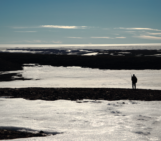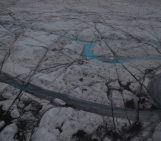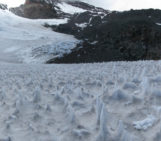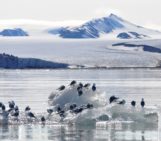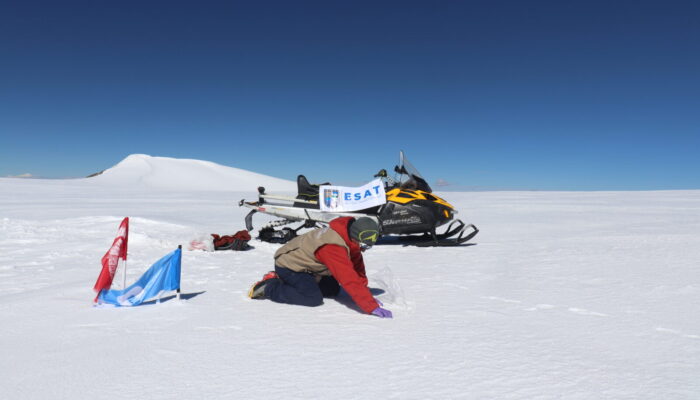
Mountain glaciers are melting rapidly due to global warming. This process is being intensified by increasingly extreme natural events, such as forest fires and air pollution from human activities. One of the main culprits is a tiny but powerful pollutant called black carbon (commonly known as soot) which darkens the surface of the snow and makes it met faster under the sun. But how much of this pollutant is actually ending up on glaciers? And what does this mean for the future of their ice? In this project, we set out to find answers by analysing snow samples from a glacier in Peru and an ice sheet on the Tibetan Plateau in China. Would you like to know how this microscopic substance can reshape entire mountain landscapes? Then read on!
The Darkening of Mountain Glaciers
Mountain glaciers have a high capacity to reflect solar radiation. This is known as albedo and related to the presence of snow on the glaciers. When the snow is recent and clean, the reflection is greater, while if the snow has impurities or is in an aged state, the reflection is less (see Figure 1). Therefore, snow should be considered as a protective layer that covers the glaciers and maintains the energy balance.
The ability of snow to reflect sunlight (albedo) is reduced when dark particles are deposited on its surface. These impurities, which can include wind – blown dust, ash, and air pollutants, absorb sunlight and cause the snow to warm and melt more quickly. One of the most impactful of these substances is black carbon, tiny particles released into the atmosphere mainly from burning fossil fuels and biomass. What makes black carbon particularly concerning is its strong capacity to absorb sunlight and its short lifespan in the atmosphere, meaning its effects are intense but relatively brief – yet they can accelerate glacier melt significantly.
When black carbon particles settle on glaciers – like those shown in Figure 2 – they darken the snow surface and reduce its ability to reflect sunlight. This change alters the glacier´s albedo because darker snow absorbs more solar energy, causing it to warm and melt faster. This phenomenon is known as positive radiative forcing. The distribution of black carbon concentrations is usually higher during the dry season. This is because there is less rainfall to wash away the particles, and at the same time, emissions from fires and human activity often increase during dry periods
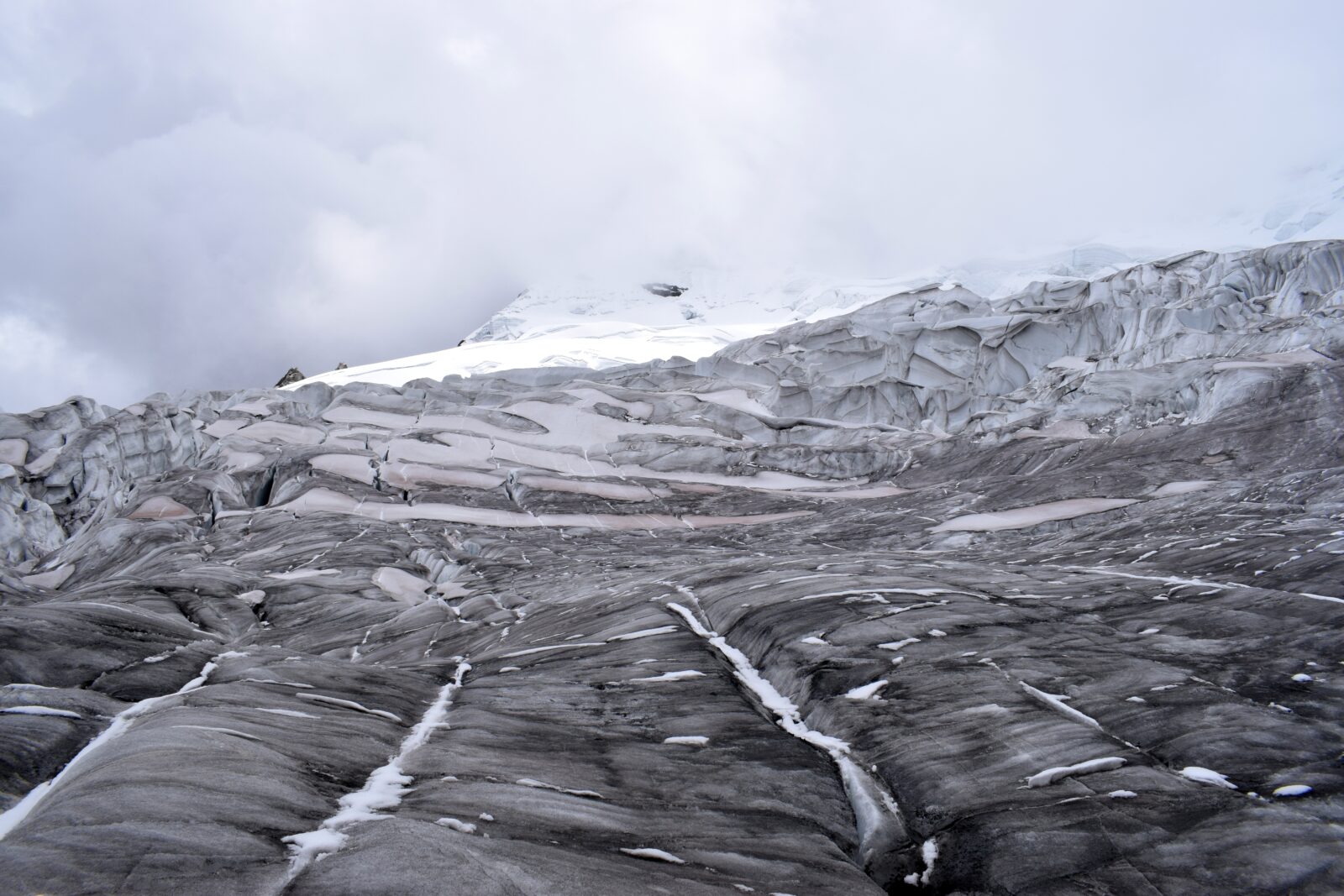
Figure 2: View of the lower part of a glacier in the Cordillera Blanca in Peru with the presence of black carbon at the end of the dry season. [Credit: Wilmer Sánchez R.]
A Guy From the Andes in Tibet
As someone born and raised in the Peruvian Andes, the idea of traveling to a place as distant and mysterious as Tibet once felt completely out of reach. So, my first emotions upon learning that I would be part of a scientific expedition to the Tibetan Plateau were disbelief and amazement. Not even in my wildest dreams did I imagine standing in the land of ancient monasteries and towering ice caps. The path to Tibet began back in 2016, when I met the renowned glaciologist Dr. Lonnie Thompson from Ohio State University, USA. He invited me to join his expedition to the Quelccaya Ice Cap, located in the Cusco region of southern Peru. Since then, I´ve been part of regular expeditions to Quelccaya and, in 2019, I joined the scientific team that extracted ice cores from Huascaran, the highest tropical glacier in the world (6,768 masl), also located in Peru. Most recently, between August and September 2024, Dr. Thompson invited me to participate in an international expedition to the Puruogangri Ice Cap on the Tibetan Plateau, alongside researchers from the Chinese Academy of Sciences.
After almost 24 hours of flying from Peru, I arrived in Beijing. I am originally from Huaraz, a mountain city in the Peruvian Andes located at 3,100 masl. It´s a place of towering peaks, deep valleys, and strong mountain traditions. That´s why, as soon as I landed in Tibe, I felt strangely at home. The days in Beijing passed between coordination meetings and emails requesting entry permits to Tibet. Once everything was settled, we flew to Lhasa. My first impression when I got off the plane was that I had returned to my hometown – surrounded by high mountains, glacial rivers, and farming villages that looked incredibly familiar. The feeling only grew stronger during our drive from the airport to the city. In Lhasa, my days were filled with walks to main Buddhist temples, exploring the iconic streets of the Forbidden City, and often blending in with the local people. Several times, Tibetan residents mistook me for a local. I recall a moment in the market when a merchant began speaking to me in Tibetan. I tried to explain in English that I was from Peru, but we just looked at each other with puzzled smiles. It was a funny moment for both of us – and for my colleagues, who watched it all unfold. Our shared features, shaped by generations of high – altitude living, made me feel not just welcome, but somehow connected.
During my stay in Lhasa and its surroundings, I could perceive some similarities with the Andean culture, for example, the worship of the mountains as sacred entities and the respect for the elements of nature. Likewise, walking through the commercial area I could notice clear similarities with life in the Andes, such as local commerce, the friendly attitude of the locals and even the way of trading their products (see Figure 3). All these shared characteristics made me reflect on the influence of the mountains and the life of the populations that live under this environment.
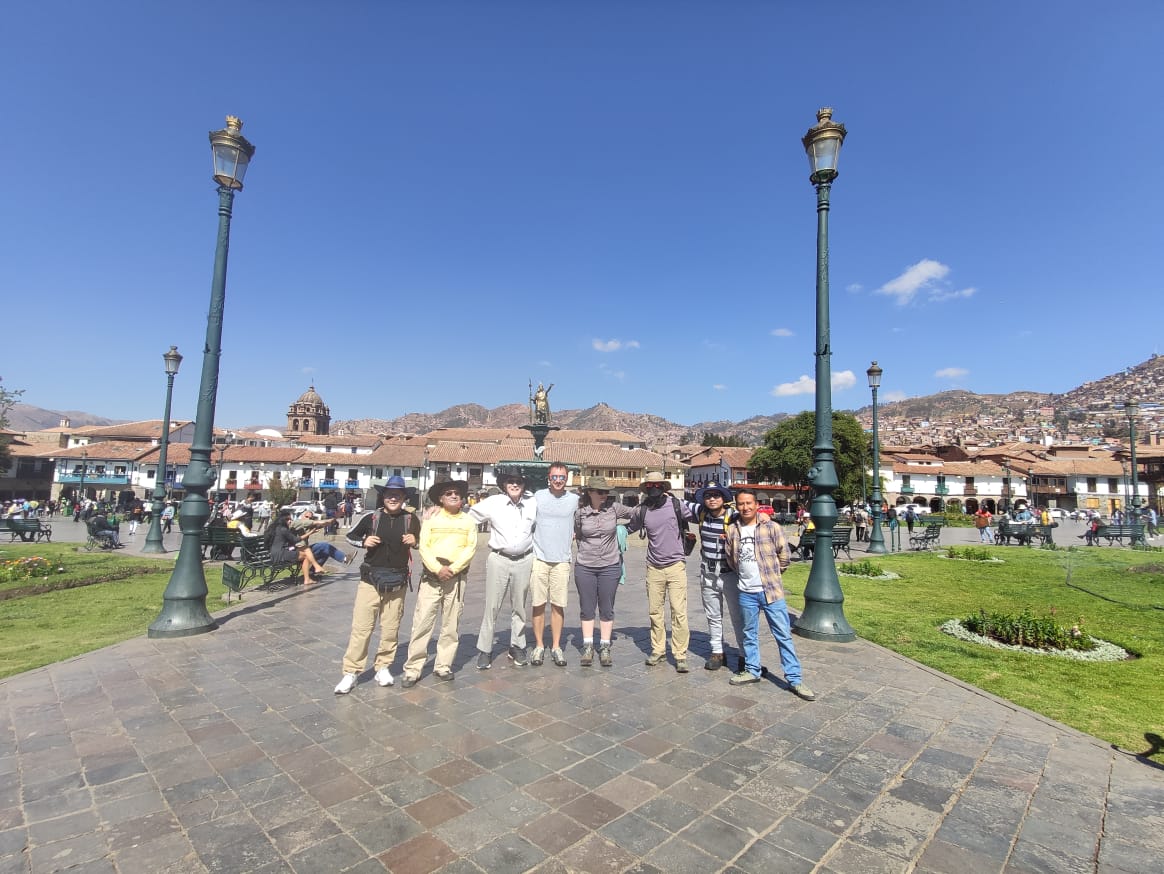
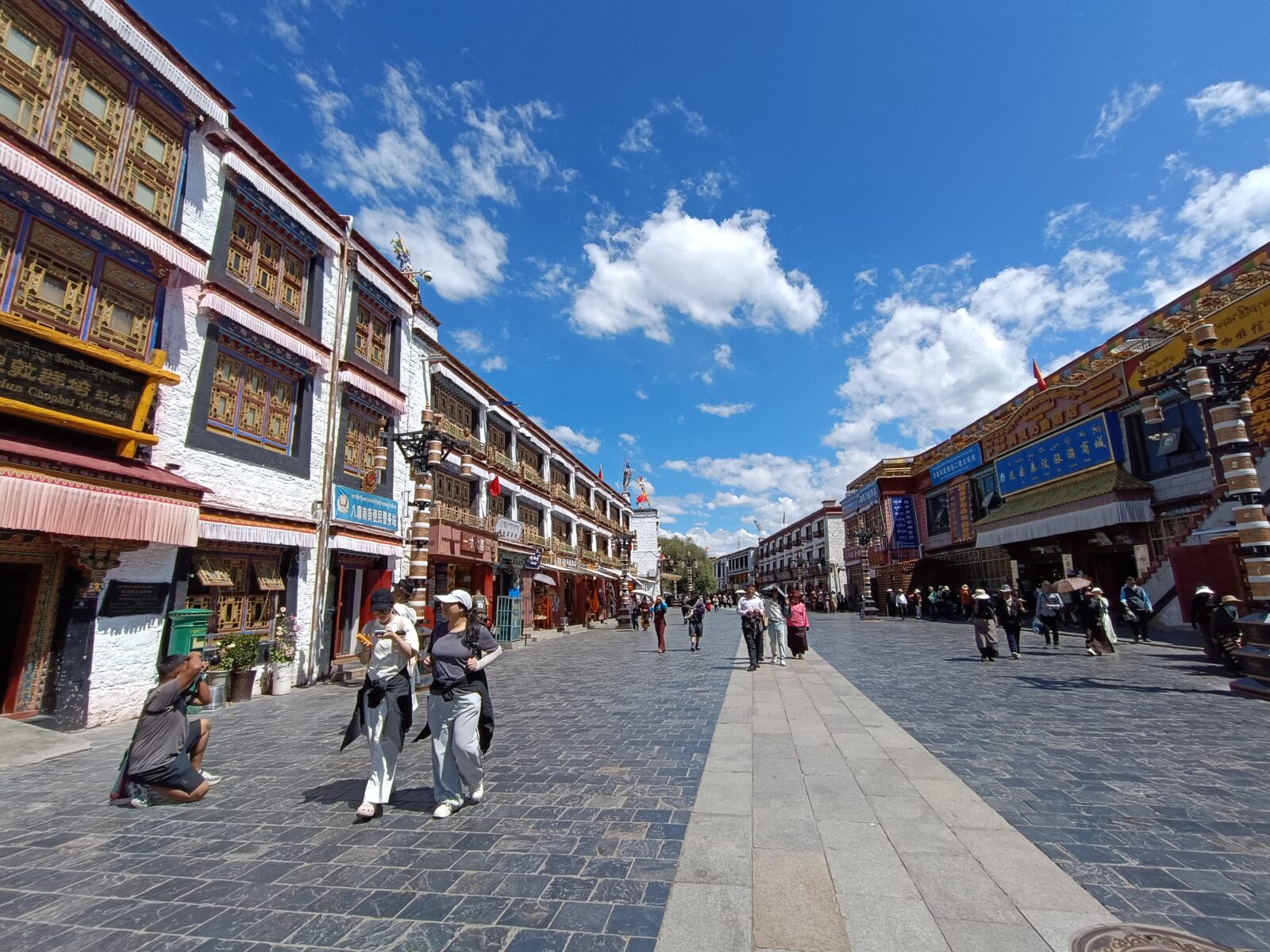
Figure 3: (Top) View of the main square of Cusco, in southern Peru. (Bottom) View of a historic street in the centre of Lhasa. [Credit: Wilmer Sánchez R.]
Expedition to the Puruogangri Ice Cap on the Tibetan Plateau, China
The main objective of the fieldwork on the Puruogangri Ice Sheet was to extract deep ice cores and measure ice thickness using Ground – Penetrating Radar (GPR). While I supported the team with this work, my main research focus was to collect snow samples for black carbon analysis. After several days of unpredictable weather and intense activity, I finally had a clear day to carry out my sampling plan. With the help of a Tibetan student and using a snowmobile to cover more ground, I collected snow samples at different elevations, from the glacier´s front all the way to its central summit (see Figure 4). The Puruogangri Ice Sheet, currently covering around 420 km2, resembles a small Antarctic ice cap in both scale and structure. A total of 24 snow samples were gathered at multiple sites, separating surface (0-2 cm) and sub-surface (2-10 cm) layers to assess the distribution of black carbon. These samples were collected on September 3, 2024, representing the black carbon load at the end of the summer season (June – August). That evening, while my colleagues planned the next steps in our field campaign, I melted and filtered the snow samples in my tent at base camp – excited to take a first look at the results of my own project.
The geomorphological and locational characteristics of both ice masses – the tropical glaciar Vallunaraju in Peru and the high-altitude Puruogangri Ice Sheet in Tibet – make them ideal for comparison. Their contrasting environments allow us to better understand how black carbon behaves in different snow and climate conditions, and to identify its main emission sources. By studying them side by side, we gain valuable insight into how this pollutant accelerates snowmelt and contributes to glacier retreat around the world.
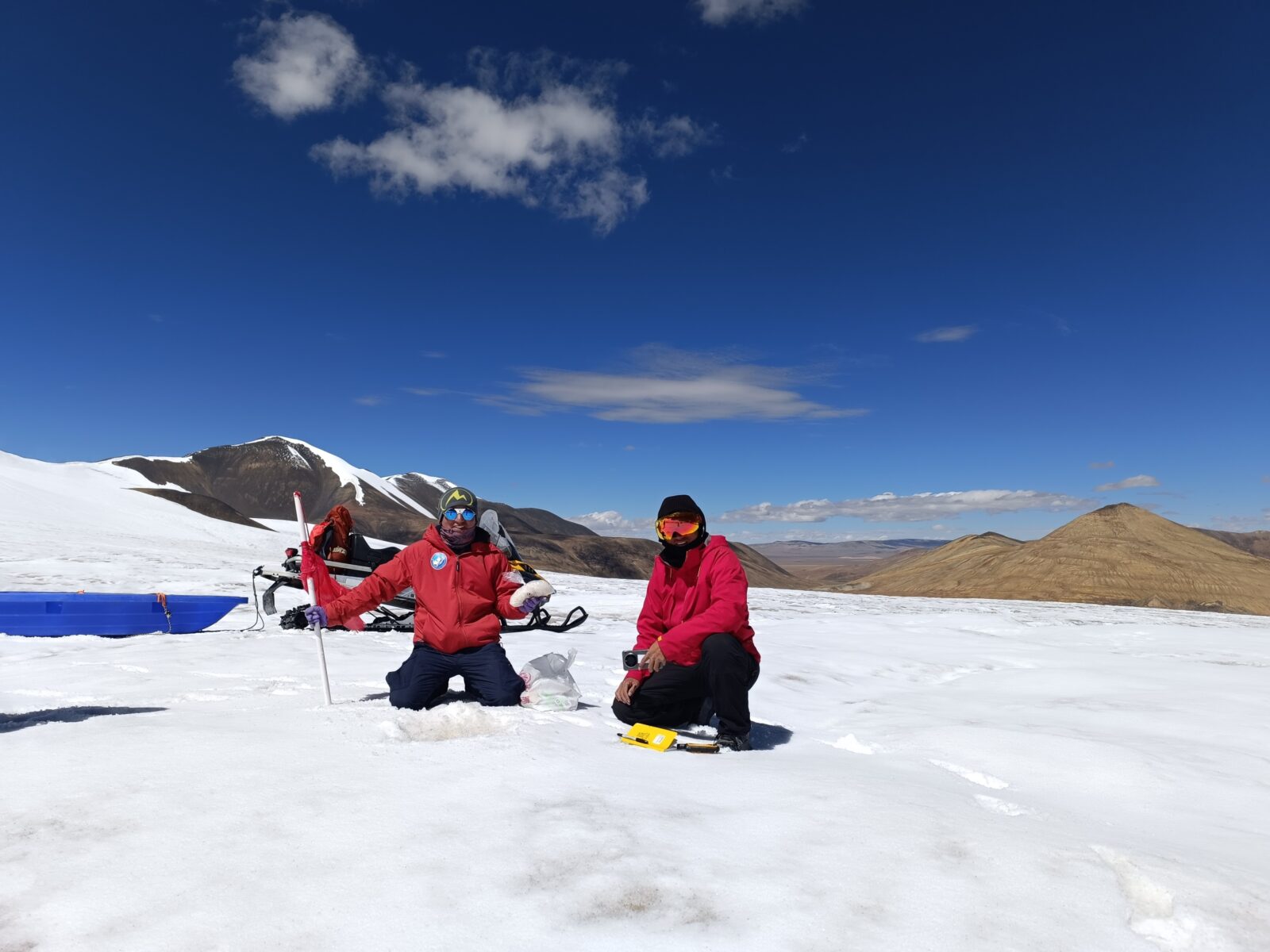
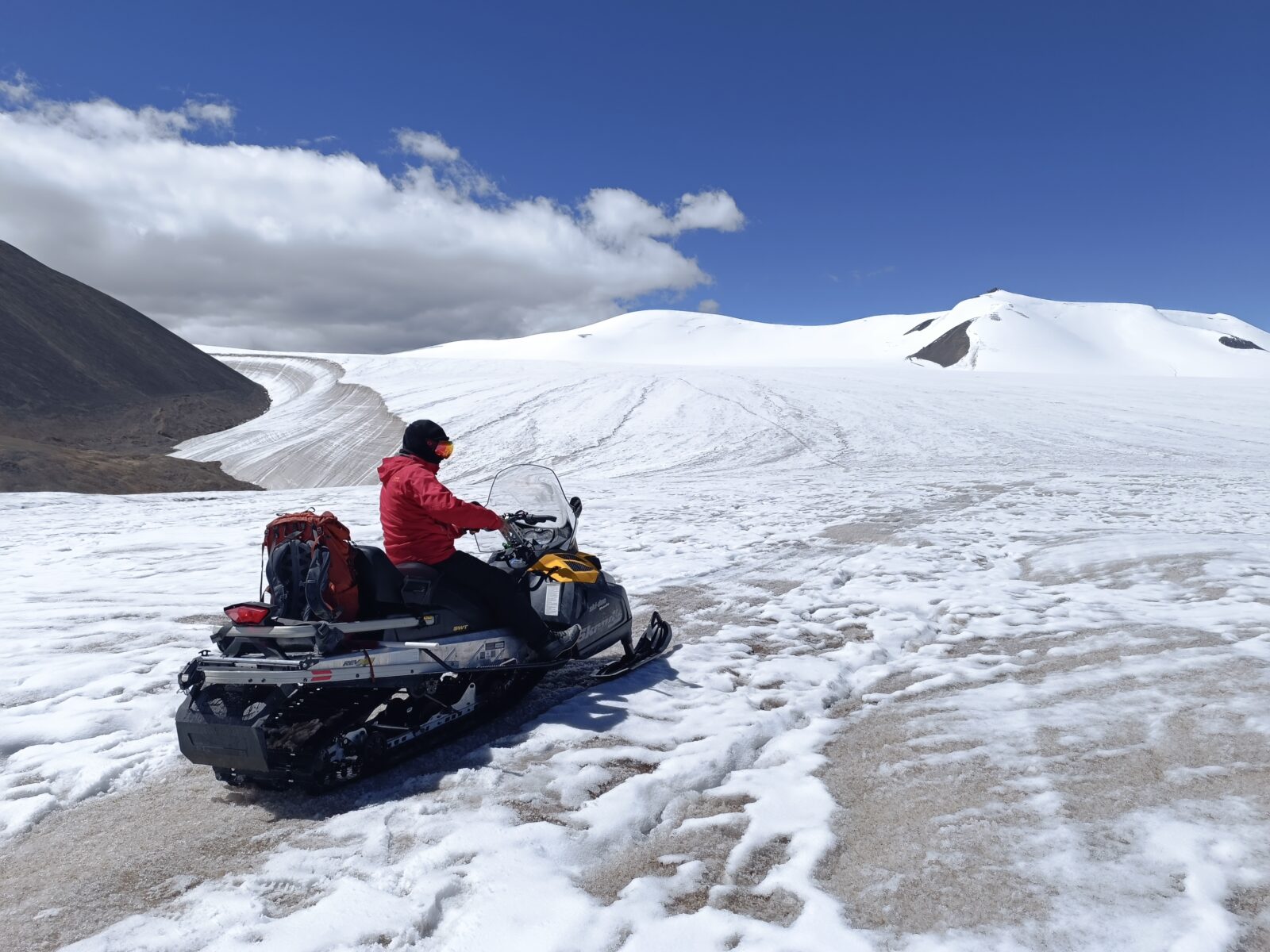
Figure 4: (Top) Sampling of the Puruogangri Ice Sheet. (Bottom) View of the extent of the ice cap. [Credit: Wilmer Sánchez R.]
Expedition to the Vallunaraju Glacier in the Cordillera Blanca, Peru
After returning from Tibet, I organized a short expedition to the Vallunaraju glacier in the central area of the Cordillera Blanca, Huaraz, at the end of October 2024. The objective was similar to the work in Puruogangri, to collect snow samples at different elevation levels from the front to the summit. The samples were collected in safe and representative areas of each elevation of the glacier, taking a total of 16 samples, half from the surface and the other half from the sub-surface (see Figure 5). This serves to understand the effect of black carbon at different depths, because sunlight penetrates more intensely the first 20 cm of the snow layer. These samples represent the amount of black carbon at the end of the dry season in the Cordillera Blanca. During the field work, a recent layer of snow was noticed, and below this (at 10 cm) the snow was dark.
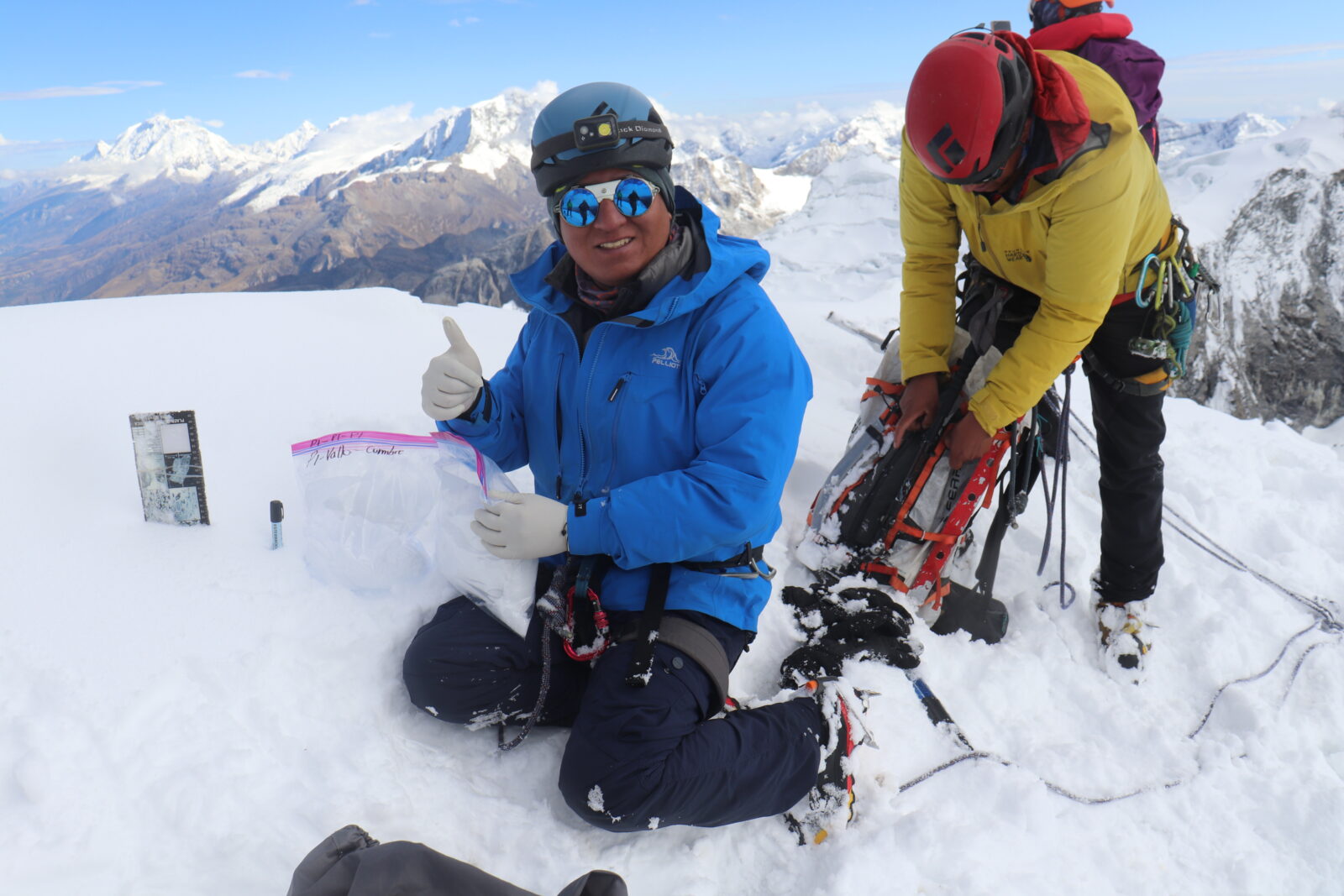
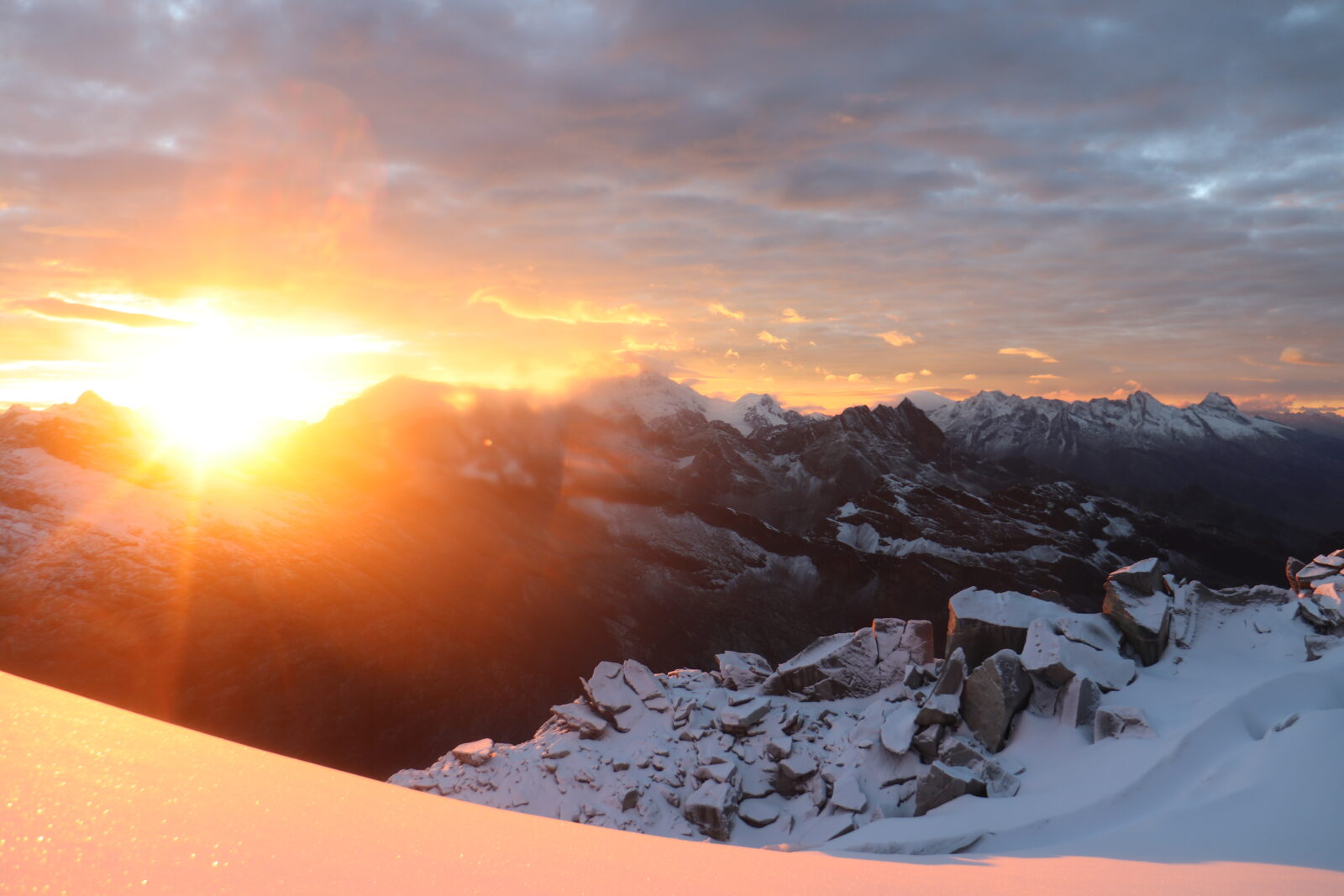
Figure 5: (Top) Sampling at the summit of the Vallunaraju Glacier. (Bottom) Sunrise view in the Cordillera Blanca. [Credit: Wilmer Sánchez R.]
Connection Between the Glaciers of the Andes and Asia
Glaciers are vital reservoirs of freshwater for millions of people who live in mountainous regions. Depending on their size, glaciers feed rivers, support agriculture, generate hydroelectric power, and sustain local ecosystems. However, these ice masses are melting at alarming rates due to rising global temperatures. A lesser known but equally important culprit is the deposition of aerosols – especially black carbon – which darken the snow surface reduce reflectivity (albedo), and accelerate melting.
Remarkably, the sources of these particles differ dramatically between regions. In the Andes, glaciers like Vallunaraju receive more natural aerosols – such as dust and smoke from Amazonian Forest fires and traditional pasture burning (see Figure 6, Left). Conversely, on the Tibetan Plateau, glaciers such as Puruogangri are exposed to a higher share of anthropogenic pollutants, carried by wind from industrial zones, urban centers, and heavy transportation corridors in India and Nepal. These contrasting aerosol inputs illustrate how local geography, weather patterns, and cultural activities shape the vulnerability of each glacial region.
Between 1962 and 2020, Peru lost 56% of its glacier coverage, while the Cordillera Blanca alone lost about 42% (see Figure 6, Right). Given that glaciers like Vallunaraju provide seasonal water supplies for hundreds of thousands of people in the Ancash region, their continued retreat poses significant risks to water security, agriculture, and hydropower.
Both the Puruogangri Ice Sheet and Vallunaraju Glacier are highly sensitive to aerosol pollution, but for different reasons: Vallunaraju´s proximity to the Amazon makes it prone to natural particulates, while Puruogangri´s location near industrial and urban sources subjects it to human – made black carbon. By comparing them, we highlight not only scientific contrasts – in emission sources and melting responses – but also cultural dimensions: the interplay between traditional Andean land use, Amazonian ecology, and high-altitude livelihood in Peru versus modern industrial practices and urban growth in South Asia. These insights provide a unique window into how human activities and regional environments collectively influence glacier health and, ultimately, water availability for distant communities.
Further Reading
Edited by Lina Madaj and Emma Pearce

